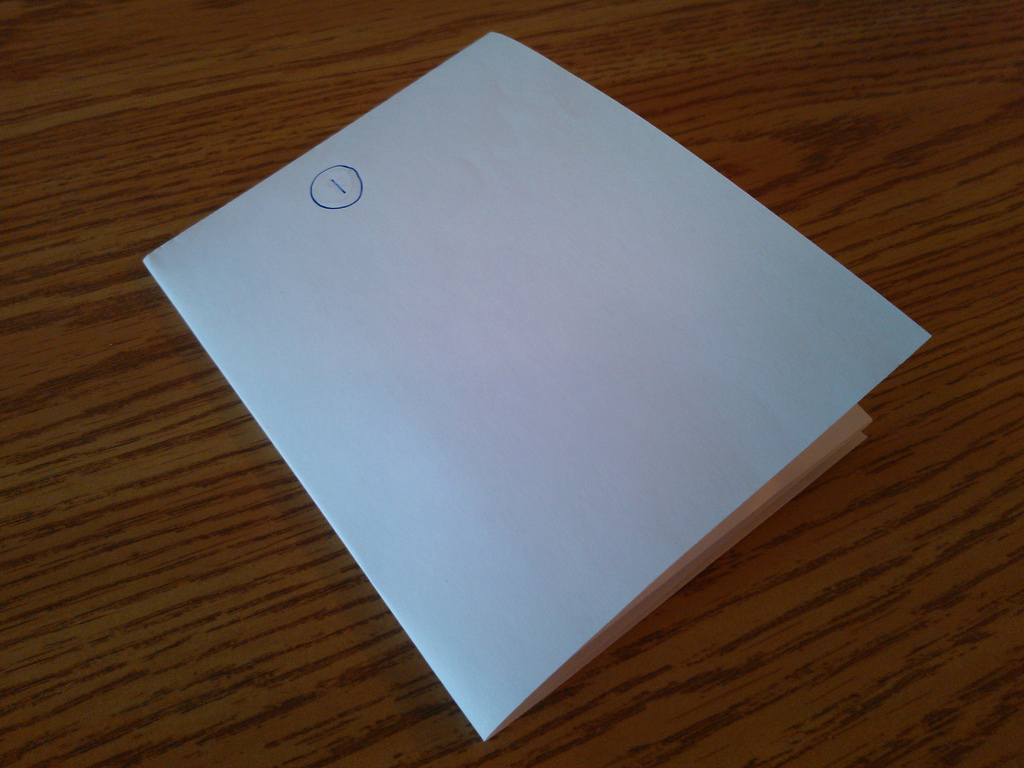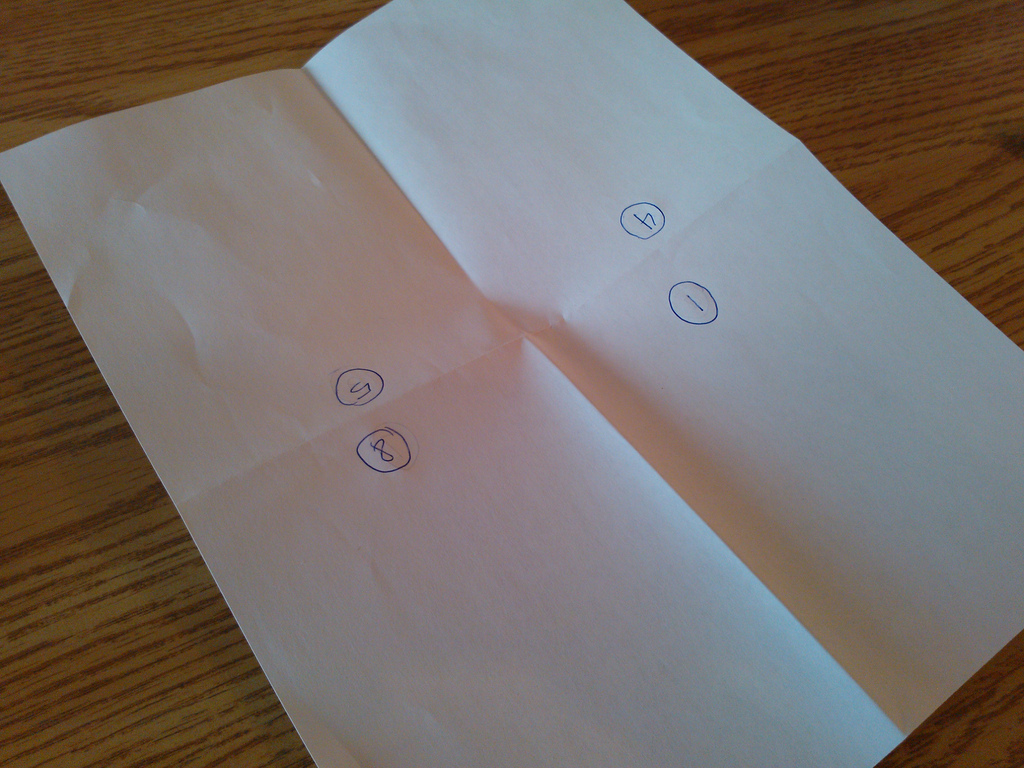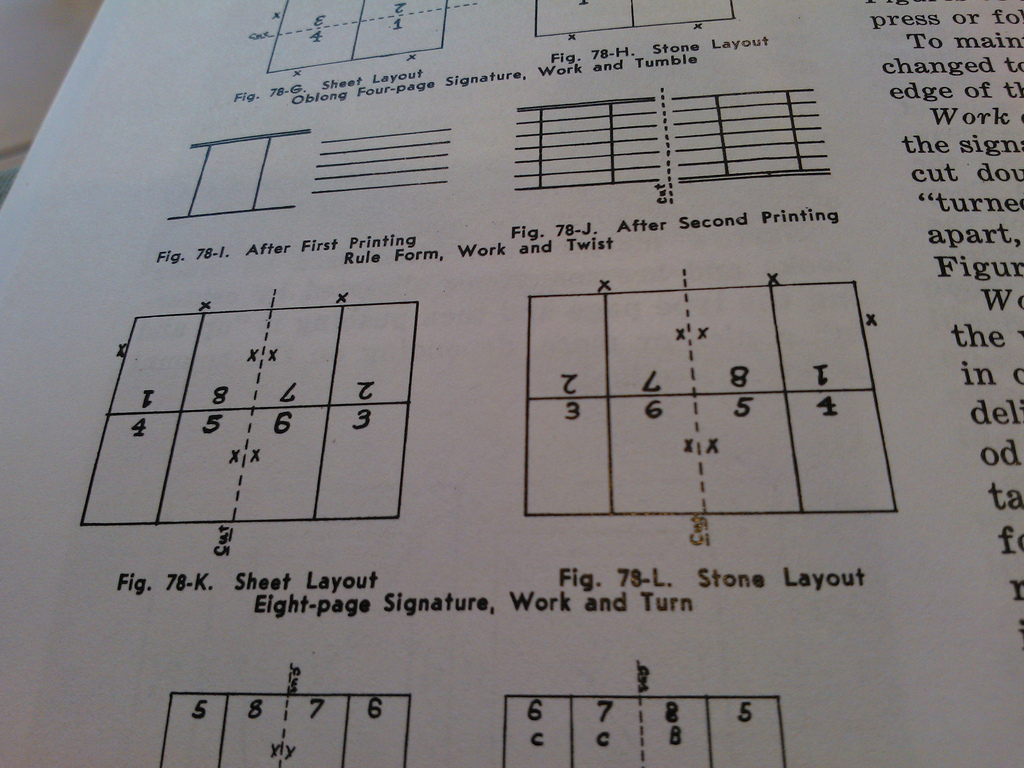I’ve been thinking of printing a short book on my Golding Jobber letterpress. Its capacity to print materials up to 12 by 18 inches means that I could print multiple book pages on a single sheet of paper that would then be folded and cut into “signatures” that would then be bound together to make the book.
The first thing I needed to understand was how imposition works — how the pages get arranged for printing so that when the sheet they are printed on is folded and cut the pages end up in the right order.
So I started by making a mock-up out of a sheet of letter-sized paper. I folded the sheet twice, then numbered the pages as they would appear once the sheet was cut along the short edge:

When I unfolded the mock-up, this is how it looked:

Consulting The Compositor’s Handbook, a very helpful 1854 book that’s been digitized from the collection of Oxford University, I turned to the section on imposition that concerned the quarto — a sheet folded twice to make 8 pages of a book — and found the layout was supposed to look like this:

That didn’t look like my mockup — it was reverse — and I spent a lot of time making new mock-ups to see if I’d done something wrong. Try as I may — it might be clear that I do not excel in two-dimensional thinking — I couldn’t figure out what I was doing wrong.
Fortunately when I got home last night there was a copy of General Printing: An Illustrated Guide to Letterpress Printing waiting for me, ordered a few days ago. In the imposition section of this book was a very helpful illustration that solved my perceptual issue:

Note how there’s a figure illustrating “sheet layout” and another illustrating “stone layout.” My problem was that I was confusing the two.
Sheet layout is “how the sheet will look once it is printed” and so it’s laid out just like my mock-up. Stone layout is “how you need to lay the pages out for printing” which is right-left reverse of sheet layout because — and herein lies the heart of my ignorance — when you print something on a printing press, left becomes right and vice versa.
You’d think I would have figured out this out by now, what with two years of setting type right to left. But, like I said, thinking in more than a single dimension is not my strong suit.
Now, on to the next step of book-making.
 I am
I am
Comments
1/ You might try folding
1/ You might try folding first as if ready for the trimmer and numbering afterwards.
2/ Irony alert - looking on the net for advice about ink printing, and letterpress at that.
Hoppy Easter.
Add new comment